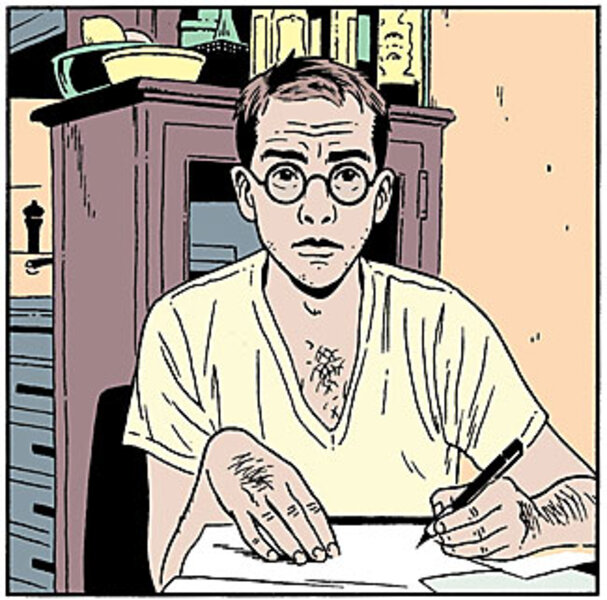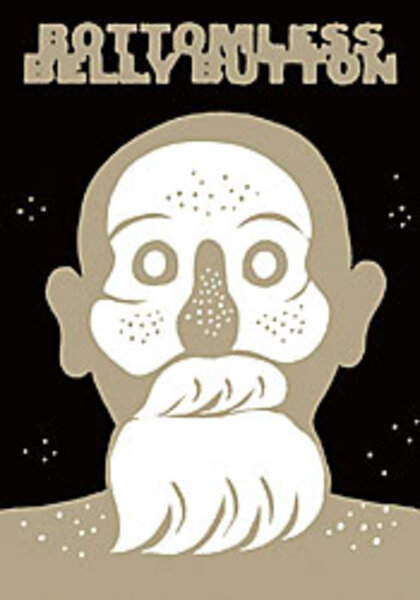Graphic novels, all grown up
Loading...
| New York
In 1969, the American writer John Updike famously declared, "I see no intrinsic reason why a doubly talented artist might not arise and create a comic strip novel masterpiece."
The statement was immediately ridiculed by literary traditionalists, who disparaged comics as a "low" medium unworthy of serious critical attention. But it became a rallying cry among comic book creators, long second-class citizens in the art world.
Forty years has proved their prescience. Graphic novels – usually defined as extended-length illustrated books with mature literary themes – have risen to widespread prominence, spurred on by the work of respected talents such as Art Spiegelman ("Maus: A Survivor's Tale") and Will Eisner ("A Contract With God").
Graphic novel sales in Canada and the United States hit $375 million in 2007, five times the figure reported in 2001, according to ICv2, a pop culture site. "Jimmy Corrigan," a book by Chris Ware, has sold hundreds of thousands of copies alone; "Persepolis," originally a graphic novel by Marjane Sartrapi, picked up an Oscar for best animated film in February.
A happy problem, then: How to pick and choose among the annual flood of titles? There's no easy rubric – this year alone has seen the rise of several young talents, each with a distinctive literary and artistic style. But a reader interested in immersing in the genre could not go wrong with any of these three books, which span the globe, from World War II-era Germany, to the closed-doors of Burmese society to quotidian existence in an alternate-universe America.
Dash Shaw – 'Bottomless Belly Button'
Writing a book can be a lonely affair. One man, one idea, and days upon days penned up in a home office, hacking over words and phrases. For the graphic novelist, things are more complex still: the book must simultaneously come alive in two dimensions. The art has to breathe, and so does the dialogue, and then the two have to complement each other, each panel building off the last.
Such was the task of 20-something artist Dash Shaw, who began penning "Bottomless Belly Button" a few years ago in Virginia, where he was attending the School of Visual Arts. He finished some 700 pages later, the proud author of a kaleidoscopic chronicle of the Loony family, population five. Most of the writing he did in his room, behind closed doors, letting his imagination spill messily onto the page.
"I wanted to do a story that was about characters," Mr. Shaw says, over lunch in New York, where he now lives. "With family stories, you don't have a lot to establish, in terms of background. These are people forced into a situation – forced into one space."
At the heart of "Bottomless Belly Button" is an internecine war among the Loonys – between the parents, who are divorcing after years of marriage; between the children; and between the family and the changing world outside.
But Shaw has a deft touch, and the stories in the book move faster than the bulk of the book suggests: Panels are sparely drawn, often with little movement from one to the next.
"The story itself is small," Shaw says. "I've done short stories where a lot more happens than it does here. It's about sequence."
It's also about rhythm. Like the very best illustrated fiction, Shaw's work moves between pathos and humor, between the fantastic and the familiar. "I would like the book to feel like it's a place I've traveled to – like a great movie I've watched," he says. "I was surrounded by these people for a long time."
Jason Lutes – 'Berlin: City of Smoke'
A few years ago, Jason Lutes was killing time, idly flipping through a stack of glossy magazines, when the page fell open to an advertisement for a book called "Bertolt Brecht's Berlin." Mr. Lutes was no great expert on European history or Bertolt Brecht, the famous German playwright and poet.
He was a writer of graphic fiction, and an artist, one immersed in a reverie of what he calls "my own personal feelings and thoughts." In 1996, Lutes had published the well-received "Jar of Fools," a veiled autobiography; he'd also spent some time as the art director at the Seattle alternative weekly The Stranger.
But something about this advertisement – archaic and offbeat – appealed to Lutes, who was then casting about for a new project. "The basic impulse," he says, "was to try to come to grips with the outside world, and one way to do that was to pick a foreign culture and immerse myself in this completely other place. To use comics as a time machine."
The result is "Berlin," a sprawling, three-book trilogy based in pre-World War II Germany. Lutes, who teaches at the Center for Cartoon Studies in White River Junction, Vt., has worked through the trilogy slowly: "Berlin: City of Stones," was released in 2000, and "Berlin: City of Smoke" will be released by Drawn and Quarterly in August. Lutes estimates that the third installment could be finished in 2012.
"It's a laborious process," Lutes says. "The art doesn't come easily to me. I have to work at it."
And yet the art in "Berlin" is stunningly intricate: a mass of panels describing the sprawling cityscape and the myriad political factions within, all struggling for power in the vacuum left by the close of World War I. Lutes's two main characters are Kurt, a journalist, and Marthe, an art student; the action of the plot hinges mostly on their interactions. Occasionally, though, Lutes pulls the lens back, soaring over the crowded squares, and the rail yards, and the tenements stacked full of disgruntled workers.
"With comics, because it's drawn by hand, because it's so up-front, there's a personal touch on every element," Lutes says. "If you do it right, there's an intimacy there – a coherent landscape for the reader to enter into."
Guy DeLisle – 'The Burmese Chronicles'
Marriage to a Médecins Sans Frontières administrator is often a drag: the constant travel, the blizzard of foreign languages, the uncomfortable guesthouse beds. But for Guy DeLisle, a French Canadian animator and writer, his years of transience quickly translated, he laughs, into a source of "artistic inspiration."
Mr. DeLisle, who is currently based in the south of France – although he will soon decamp to Jerusalem – has joined his wife on a score of trips, from Ethiopia to Vietnam, and has journeyed on his own to Pyongyang, North Korea, and Shenzhen, a sprawling factory city in southern China.
In 2000, he began collecting the experiences in graphic form, weaving spare illustrations and a wry inner monologue into dynamic portraiture.
"Shenzhen" was released in 2000 in Canada – and in 2006 in the US – to largely enthusiastic reviews. DeLisle's third book, entitled "Pyongyang," was published in English three years ago; it was driven by its humorous take on North Korean culture.
"It's my natural way of telling a story," DeLisle says. "With these books, and with my letters home to my friends and family, I always used humor. I like to keep the audience awake."
DeLisle's latest book, "The Burmese Chronicles," was written after a 2005 trip to Rangoon, a city dominated by Burma's military junta.
Like "Pyongyang," much of "Chronicles" is related to culture shock: the strange grocery stores, the expat culture, the local traditions, the stifling heat and the thick rains of the monsoon season. But DeLisle also has a keen eye for cultural perspective and returns repeatedly to the case of Aung San Suu Kyi, the former Burmese leader currently under detention in Rangoon.
"I tend to describe the routine aspects of my life and mix it with historical events," DeLisle says. "I might talk about taking a walk with my son, but I'm also going to talk about the political situation. I didn't think I'd write about Burma, to be honest," he adds. "And then you start collecting notes, and the inspiration starts kicking in, and pretty soon, you have enough for a book."







